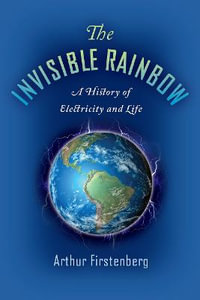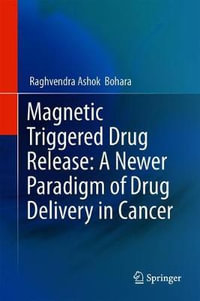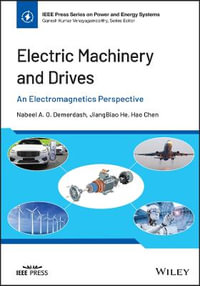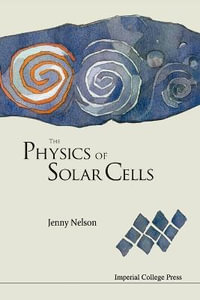
At a Glance
Hardcover
476 Pages
476 Pages
Dimensions(cm)
24.77 x 16.51 x 3.18
24.77 x 16.51 x 3.18
Hardcover
$410.22
or 4 interest-free payments of $102.56 with
orAims to ship in 7 to 10 business days
While dealing with the design and operation of ion sources, this book additionally discusses the physics of ion formation of the various elements with different charge states and charge neutralization. Ion selection and beam diagnostics are equally included, and the presentation of the necessary equations and diagrams for the various parameters makes this a useful handbook for ion sources.
| Introduction | p. 1 |
| Major Applications and Requirements | p. 1 |
| Performances and Research Subjects | p. 1 |
| Historical Development | p. 8 |
| Gas Discharge Fundamentals | p. 11 |
| Thermionic Emission | p. 11 |
| Secondary Electron Emission | p. 12 |
| Surface Ionization | p. 13 |
| Elastic and Inelastic Collisions | p. 16 |
| Collision and Probability of Collision | p. 16 |
| Elastic Collision and Its Cross Section | p. 18 |
| Inelastic Collision | p. 20 |
| Ionization Cross Section | p. 21 |
| Recombination of Charged Particles | p. 22 |
| Mobility | p. 23 |
| Diffusion Coefficient | p. 25 |
| Particle Distribution in a Retardation Region | p. 26 |
| Ambipolar Diffusion | p. 26 |
| Magnetic Field Influence on Particle Motion | p. 28 |
| Fundamentals of a Hot-Cathode Arc Source | p. 29 |
| Stable Theory of the Cathode Double Sheath | p. 29 |
| Bipolar Flow | p. 30 |
| CathodeDoubleSheath | p. 31 |
| Cathode Double Sheath Oscillations and Noise | p. 34 |
| Scattering of Primary Electrons | p. 35 |
| Beam-Plasma Interaction | p. 36 |
| Positive Column Plasma | p. 38 |
| Anode Region | p. 44 |
| Minimum Pressure | p. 45 |
| References | p. 46 |
| Extraction Systems for Ion Sources | p. 47 |
| Extraction Systems Requirements | p. 47 |
| Extraction System with a Solid Emitter | p. 48 |
| Space-Charge-Limited Flow for an Ideal Diode | p. 48 |
| Plane Diode | p. 48 |
| Cylindrical Diode | p. 51 |
| Spherical Diode | p. 51 |
| Some Universal Relationships | p. 52 |
| Space-Charge-Limited Flow with Multiple Ion Species | p. 54 |
| Pierce-Shape Extraction System | p. 56 |
| High-Perveance Electron Gun | p. 57 |
| Emittance and Brightness | p. 58 |
| Emittance | p. 58 |
| Brightness | p. 60 |
| Relation Between Brightness and Emittance | p. 61 |
| Effective Emittance | p. 62 |
| Emittance and Brightness of an Ion Source | p. 63 |
| Ion Extraction from a Plasma | p. 65 |
| Plasma-Sheath Equation and the Emitting Current from a Plasma | p. 65 |
| The "Extractable Flow" from an Extraction System | p. 70 |
| Adjustment of Ion Emissive Surface | p. 71 |
| Comparison between a Plasma Ion Source and an Electron Gun Extraction System | p. 72 |
| Geometry of Extraction Systems | p. 73 |
| Typical Types and Geometries | p. 73 |
| Probe Extraction Systems for Low Plasma Density | p. 76 |
| Principle and Analytical Model | p. 76 |
| Experimental Results | p. 79 |
| Aperture Extraction Systems for Medium Plasma Density | p. 79 |
| Analytical Model for a Two-Electrode System | p. 80 |
| Circular Three Electrode Extraction System | p. 83 |
| Slit Extraction System | p. 86 |
| Four Electrode Extraction System | p. 89 |
| Expansion Cup Extraction System for High Plasma Density | p. 90 |
| Some Properties of a Diffusing Plasma | p. 90 |
| Extraction System of a Duoplasmatron Source | p. 92 |
| Large-Area Multi-Aperture Extraction Systems | p. 95 |
| Multi-aperture Beam Focusing by Aperture Displacement | p. 96 |
| Power Loading of the Electrodes | p. 100 |
| Grid-controlled Extraction System | p. 101 |
| Research Methods of Extraction Systems | p. 103 |
| Experimental Research | p. 103 |
| Analytical Approaches to Beam Optics | p. 103 |
| Numerical Simulations | p. 104 |
| Physical Models | p. 104 |
| Physical Equations | p. 106 |
| Some Results | p. 108 |
| Some Other Problems | p. 110 |
| Transverse Magnetic Field Effects on Ion Extraction | p. 110 |
| Technological Problems of Extraction Systems | p. 111 |
| Suppression of Breakdown in the Lateral Extraction Ion Source | p. 111 |
| Some Technological Problems | p. 112 |
| References | p. 113 |
| Positive Ion Sources | p. 116 |
| Classification of Ion Sources | p. 116 |
| Hot Cathodes | p. 118 |
| Requirements and Types of Hot Cathodes | p. 118 |
| Cathode Material and Lifetime | p. 119 |
| Effects of Discharge Current | p. 122 |
| Magnetic Field Effects of the Filament Current | p. 122 |
| Plasma Cathodes | p. 123 |
| Arc Source in a Uniform Magnetic Field | p. 125 |
| Hot-Cathode Penning Source | p. 131 |
| Simple Principle | p. 131 |
| Typical Structures | p. 134 |
| Duoplasmatron Ion Source | p. 135 |
| General Principle | p. 135 |
| Formation of the Constriction Double Sheath | p. 137 |
| Primary Parameters | p. 138 |
| Heavy Ion Duoplasmatron Source | p. 141 |
| Hot-Cathode "Freeman" Source | p. 142 |
| Broad Beam Ion Sources | p. 144 |
| Cold-Cathode PIG Source | p. 148 |
| Principles of a Cold-Cathode Penning Discharge | p. 148 |
| Cold-Cathode PIG Sources | p. 149 |
| Radio-Frequency Ion Source | p. 153 |
| Principle of an RF Discharge | p. 153 |
| Magnetic Field Effects and Structures | p. 157 |
| Heavy Ion RF Sources | p. 159 |
| Metallic Ion RF Sources | p. 159 |
| RF Ion Source for Ion Thrusters | p. 161 |
| RF Tritium Ion Source | p. 162 |
| Beam Current Modulation from RF Sources | p. 162 |
| Technology of Heavy Ion Sources | p. 163 |
| Special Requirements for Heavy Ion Sources | p. 163 |
| Types of Heavy Ion Sources | p. 164 |
| Surface Ionization and Thermionic Emission Source | p. 165 |
| High Field Ion Source | p. 168 |
| Gas Field Ionization Source | p. 169 |
| Liquid Metal Ion Source | p. 170 |
| Feed Material | p. 174 |
| Methods of Vapor Transport | p. 176 |
| Design and Operation of Heavy Ion Sources | p. 179 |
| References | p. 182 |
| Giant Ion Sources | p. 187 |
| DuoPIGatron Ion Source | p. 188 |
| Essential Principle | p. 188 |
| Improvement of the Plasma Uniformity | p. 190 |
| Typical Results | p. 193 |
| Periplasmatron Ion Source | p. 196 |
| Multifilament Ion Source | p. 197 |
| Essential Principle | p. 197 |
| Multifilaments and Multislot Extraction Electrode | p. 199 |
| Ionization Efficiency | p. 200 |
| Typical Results | p. 201 |
| Magnetic Multipole Ion Source | p. 203 |
| General Description | p. 203 |
| Magnetic Multipole (Multicusp) Field | p. 204 |
| Confinement Principle of a Cusped Field | p. 204 |
| Magnetic Field Configuration | p. 206 |
| Influence of Other Parameters | p. 209 |
| Typical Results and Applications | p. 212 |
| Hall Accelerator | p. 213 |
| Cluster Ion Source | p. 216 |
| Intense Pulsed Ion Source | p. 218 |
| Reflex Triode | p. 219 |
| Magnetically Insulated Ion Diode | p. 220 |
| Anode Plasma and Structure | p. 222 |
| References | p. 225 |
| Multiply Charged Ion Sources | p. 229 |
| Introduction | p. 229 |
| Formation of Multiply Charged Ions | p. 231 |
| Physical Definitions for Multiple Ionization | p. 231 |
| Ionization Potential | p. 231 |
| Total and Partial Ionization Cross Section | p. 232 |
| Distribution of Charge States and Average Charge State | p. 233 |
| Formation of Multiply Charged Ions | p. 233 |
| Multiple Ionization by Single Collisions | p. 233 |
| Stepwise Single Ionization of Ions | p. 235 |
| Stepwise Multiple Ionization of Ions | p. 238 |
| Ionization of Metastable Atoms or Ions | p. 238 |
| Loss Processes of Multiply Charged Ions | p. 239 |
| Loss by Charge Transfer | p. 239 |
| Loss by Recombination | p. 240 |
| Loss by Diffusion | p. 241 |
| Balance Equations for Ion Charge States | p. 243 |
| Multiply Charged Ion Generation by Stripping of Fast Ions | p. 246 |
| Major Research of MCIS | p. 246 |
| Multiply Charged Electron Beam Ion Source | p. 249 |
| Electron Beam Ion Source | p. 249 |
| Typical Structure | p. 249 |
| Essential Principle and Results | p. 251 |
| Electron Beam Ion Trap | p. 255 |
| Time-of-Flight EBIS (TOFEBIS) | p. 256 |
| Conventional Multiply Charged Ion Sources | p. 256 |
| Penning Multicharged Ion Source | p. 256 |
| Introduction, Types, and Typical Structures | p. 256 |
| The Essential Principle of Generating Multiply Charged Ions in a PIG Source | p. 257 |
| Experimental Results | p. 258 |
| Duoplasmatron MCIS | p. 261 |
| Other Plasma Discharge MCIS | p. 263 |
| Radio-Frequency Ion Source | p. 263 |
| Electrostatic Oscillating Electron Ion Source | p. 263 |
| Trapped Ion Source | p. 264 |
| Microwave Ion Sources | p. 264 |
| Electron Cyclotron Resonance Multiply Charged Ion Source | p. 264 |
| Development and Typical Structure | p. 264 |
| Essential Principles and Results | p. 268 |
| High Intensity Microwave Ion Source | p. 277 |
| Cavity Type Microwave Ion Source | p. 277 |
| Antenna Type Microwave Ion Source | p. 281 |
| High-intensity Microwave Proton Source | p. 282 |
| Hot Electron Layer Ion Source (HELIOS) | p. 284 |
| Beam-Plasma Ion Source | p. 285 |
| High Density Plasma Sources | p. 286 |
| Laser Multiply Charged Ion Source | p. 286 |
| Metal Vapor Vacuum Arc Ion Sources | p. 292 |
| Vacuum Spark Ion Source | p. 297 |
| References | p. 297 |
| Mass and Energy Spectra of Ion Sources | p. 304 |
| Mass Spectra of a Hydrogen Ion Source | p. 304 |
| Physical Processes Effecting the Mass Spectra | p. 305 |
| Particle Balance Equations for Determining the Mass Spectra | p. 310 |
| Proton Content of an RF Ion Source | p. 313 |
| Mass Spectra of a Magnetic Multipole Ion Source | p. 314 |
| Mass Spectra of a Duoplasmatron Ion Source | p. 315 |
| Mass Spectra of a Hot-Cathode PIG Ion Source | p. 316 |
| Mass Spectra of a Cold-Cathode PIG Ion Source | p. 317 |
| Energy Spectra of Ion Sources | p. 318 |
| Physical Cause of the Energy Spread | p. 318 |
| Energy Spectra of an RF Ion Source | p. 319 |
| Energy Spectra of Other Ion Sources | p. 322 |
| References | p. 323 |
| Negative Ion Sources | p. 325 |
| Introduction | p. 325 |
| Electron Affinity | p. 325 |
| Historical Development | p. 326 |
| Negative Ion Formation Processes | p. 327 |
| Volume Formation of Negative Ions | p. 328 |
| H- Formation by Electron Impact | p. 328 |
| Negative Ion Formation by Multiple Charge-Transfer | p. 332 |
| Surface Formation of Negative Ions | p. 338 |
| Work-function of Surfaces | p. 338 |
| Surface Sputtering | p. 342 |
| Essential Principle | p. 343 |
| Distributions of Sputtered Particles | p. 347 |
| Particle Reflection from a Solid Surface | p. 348 |
| Essential Principles | p. 348 |
| Parameter Dependence of Reflection | p. 349 |
| Distribution of Reflected Particles | p. 350 |
| Secondary Ion Emission | p. 352 |
| General Principles | p. 352 |
| H- Ion Formation by Particle and Surface Interaction | p. 355 |
| Other Negative Ions Formed by Sputtering | p. 356 |
| Negative Surface Ionization | p. 357 |
| Destruction of Negative Ions | p. 358 |
| Destruction Processes of Negative Ions | p. 358 |
| Cross-Sections of H- Destruction | p. 359 |
| Volume H- Ion Source | p. 361 |
| Duoplasmatron Negative Ion Sources | p. 361 |
| Penning Negative Ion Sources | p. 363 |
| Magnetically Filtered Multicusp Volume Sources | p. 364 |
| Essential Principle | p. 364 |
| Magnetic Filter | p. 364 |
| Dependence on Various Parameters | p. 366 |
| Cesium Seeded Multicusp H- Source | p. 368 |
| Giant H- Ion Sources | p. 368 |
| Other Volume Production Negative Ion Sources | p. 371 |
| H- Ion Extraction and Electron Suppression | p. 372 |
| Surface-Plasma H- Ion Sources | p. 374 |
| Magnetron H- Ion Sources | p. 374 |
| Penning Surface-Plasma H- Ion Sources | p. 377 |
| Table of Contents provided by Publisher. All Rights Reserved. |
ISBN: 9783540657477
ISBN-10: 3540657479
Published: 8th November 1999
Format: Hardcover
Language: English
Number of Pages: 476
Audience: General Adult
Publisher: Springer
Country of Publication: DE
Dimensions (cm): 24.77 x 16.51 x 3.18
Weight (kg): 0.87
Shipping
| Standard Shipping | Express Shipping | |
|---|---|---|
| Metro postcodes: | $9.99 | $14.95 |
| Regional postcodes: | $9.99 | $14.95 |
| Rural postcodes: | $9.99 | $14.95 |
How to return your order
At Booktopia, we offer hassle-free returns in accordance with our returns policy. If you wish to return an item, please get in touch with Booktopia Customer Care.
Additional postage charges may be applicable.
Defective items
If there is a problem with any of the items received for your order then the Booktopia Customer Care team is ready to assist you.
For more info please visit our Help Centre.
You Can Find This Book In

Understanding Electromagnetic Transients in Power Systems
IEEE Press Series on Power and Energy Systems
Hardcover
RRP $240.95
$166.95
31%
OFF
OFF
This product is categorised by
- Non-FictionScienceChemistry
- Non-FictionSciencePhysicsNuclear Physics
- Non-FictionSciencePhysicsMaterials & States of Matter
- Non-FictionSciencePhysicsParticle & High-Energy Physics
- Non-FictionScienceScience in GeneralIndustrial Applications of Scientific Research & Technological Innovation
- Non-FictionEngineering & TechnologyElectronics & Communications EngineeringElectronics EngineeringElectronic Devices & Materials
- Non-FictionSciencePhysicsElectricity























